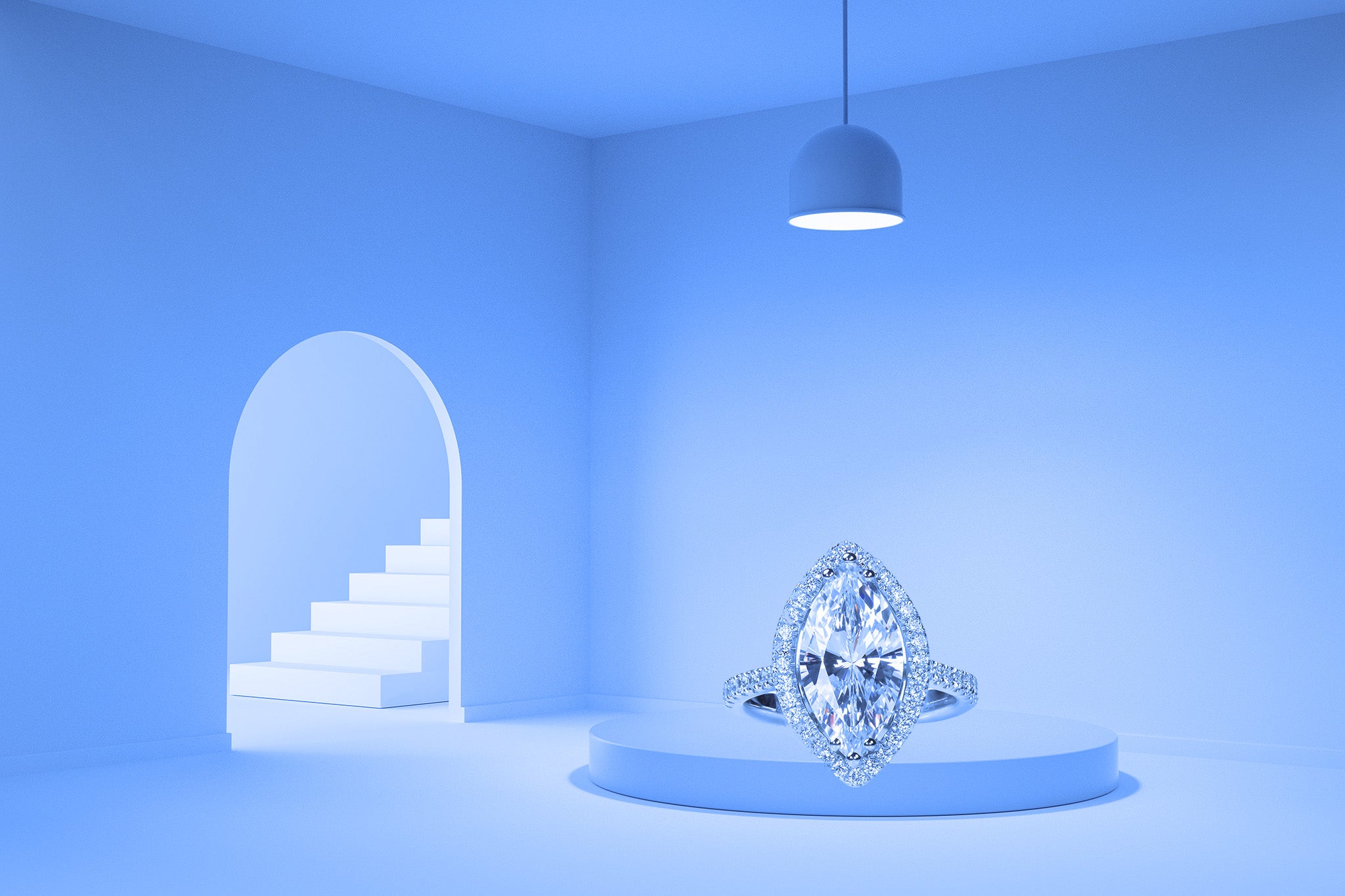What are the different types of ring settings?

Ring settings are an essential aspect of the ring-shopping experience. You've decided on gemstones and precious metals, but it’s the setting that will best display your choices. In this post we'll discuss how stones are integrated into a ring and affect the overall look and durability. You'll also learn jewelry terms that refer to various design elements.
Prong
Prong settings are the most popular type of ring setting. A prong is a small metal claw that holds a gemstone in place. Prongs can be made of gold, silver, platinum or other metal. The number of prongs on a ring varies with the size of the gemstone.
Prong settings expose more of the stone than other settings, allowing light to enter the gemstone from all angles which makes the stone appear brighter and more sparkly.
The downside to prong settings is that they can catch on clothing or hair and get damaged more quickly than other designs. A jeweller should check your prong-set ring periodically to ensure the prongs are still secure and there is no risk of losing the stone.
Bezel
The bezel setting is one of the most popular designs for rings. The diamond or other gemstone is secured in a bezel by a metal rim completely or partially surrounding it. The rim can be gold, silver, platinum, rose gold, or other metal.
Bezel settings can be found in both engagement rings and wedding bands. They are in demand for those who want a simple and elegant look. The diamond or other gemstone in a bezel setting is also less likely to become loose over time than in some other ring settings.
Pavé
Stones are set close together with pavé settings giving the appearance of a continuous surface of diamonds. This setting is often used for engagement rings and other special occasion jewelry.
Pavé settings can be made with any stone, but diamonds are the most popular choice because they have a high refractive index, which means they sparkle more than other stones. Round or square stones work with pavé settings and the size of the stones can vary from very small to large.
Pavé settings are usually made with prongs that hold the stones in place, but some variations use bezels or channels. The number of prongs used will depend on the size and shape of the stones.
Channel
A channel setting is a ring design in which the diamonds or other gemstones are placed into channels - grooves carved into the ring's band. This type of setting can be used for both solitaire and multi-stone rings. Channel settings are popular because they protect the stones and keep them securely in place..
A channel setting can be used for solitaire and multi-stone rings. Solitaire rings usually have just one stone, while multi-stone rings have two or more stones.
If you're looking for a ring with a classic style, a channel setting may be the right choice for you.
Bar
There are many different bar settings, each with advantages and disadvantages. The bar bezel setting is the most common, where the metal bar encircles the stone holding it securely in place. However, resizing a ring with a bezel setting can be difficult as the metal must be removed and replaced around the stone. Another popular bar setting type is the flush set, where the metal bar sits flush against the gem. This creates a sleek look but can also make it more difficult to clean the ring since there is no gap between the metal and the stone.
Tension
The tension setting uses compression to hold a center diamond or gemstone in place, making the stone appear as if it's floating between two pieces of metal or within the band itself.
Among all the ring settings available, the prong and bezel settings are the most popular.
The prong setting holds a diamond or other stone in place with metal claws or prongs allowing the maximum amount of light to enter the stone, making it sparkle and appear more brilliant. This setting can catch on clothes and hair, however, and the prongs may need to be adjusted by a jeweller occasionally.
With a bezel setting, the metal rim encircles the stone completely, holding it securely. This setting protects the stone from being knocked out of place, making it a good choice for an engagement ring or other jewelry that is worn daily. The one drawback to this setting is that it might limit the amount of light entering the stone.
Durability is one of the most important factors when choosing a ring setting. Certain settings are more vulnerable to wear and tear than others, so selecting a design that will stand up to everyday wear is essential.
The most durable ring setting is the bezel setting. Because it encircles the diamond or gemstone with a metal rim, the stone is protected from being scratched or chipped. A bezel setting is ideal for active people who wear their rings daily.
Another durable option is the tension setting, which holds the stone in place by tension instead of metal prongs. This design keeps the stone securely in place, making it less likely to fall out or become damaged.
Ring guards can be worn over the ring for those who want extra protection for their stones.

When deciding on the safest setting for a precious stone, there are a few things to consider. The first is the type of metal used in the design. Platinum and palladium are solid and durable metals less likely to scratch or chip than gold. The second consideration is the type of setting. Prong settings are the most popular and, when looked after, offer significant security for your stone. Bezel settings offer subtle style and maximum protection for your gems.
No matter what setting you choose, it is essential to have your diamond checked by a professional jeweller every few years to ensure it is still secure.

Many factors can affect the overall look of a diamond. One of the most important is the setting, which can make a diamond appear larger or smaller, depending on the style and design.
A bezel setting, where the metal surrounds, or partially surrounds the diamond, can make the stone look beautiful. Another option is to choose a prong setting with a minimum number of prongs allowing more light to pass through the diamond. Light makes the stone appear brighter and, therefore, slightly larger. Finally, a raised setting will make a diamond look bigger because it sits higher off the finger.
Ultimately, it is up to the individual to decide what look they prefer. For example, some people like a setting that makes their diamond look more prominent, while others want a more understated and subtle design.

You've decided which gemstones and precious metals you want for your ring but the setting you choose will display your personal style to the world.
Take as much time as you need to consider which ring setting is right for you and your lifestyle.
It's an important decision that will affect how you enjoy your ring for years to come.







